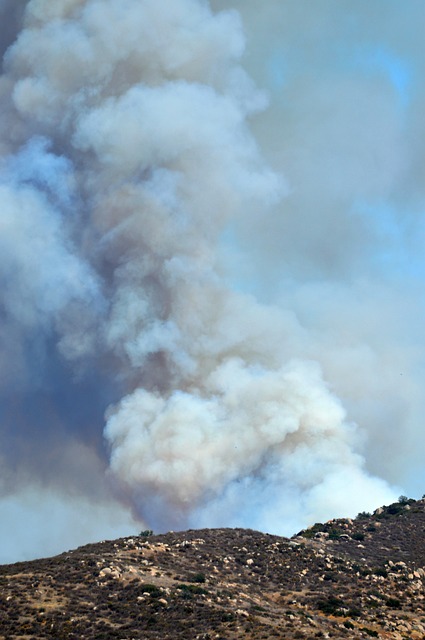Selling a fire-damaged home in California involves adhering to strict regulations for transparency, safety, and compliance. Property owners must disclose known damage, follow local building codes for repairs, and navigate complex financial dynamics to mitigate legal risks and market impacts. With proper preparation, including documentation, disclosure, and specialized support, selling such properties is achievable while ensuring fairness for all parties.
In California, understanding housing regulations is crucial when considering the unique challenges of selling a fire-damaged property. This comprehensive guide delves into the legal aspects and requirements that homeowners face, offering insights on navigating the complexities of the process. From evaluating insurance claims to mitigating potential impacts on property values, this article equips you with essential knowledge for successfully selling a fire-affected residence in California.
- Understanding California's Housing Regulations: A Comprehensive Overview
- Selling a Fire-Damaged Home: Legal Considerations and Requirements
- The Impact of Fire Damage on Property Values and Insurance Claims
- Navigating the Process: Tips for Selling a Fire-Affected Residence in CA
Understanding California's Housing Regulations: A Comprehensive Overview

California’s housing regulations are a complex web designed to ensure safety, accessibility, and fair practices in real estate transactions, including when selling a fire-damaged home. Understanding these rules is paramount for both sellers and buyers alike. These regulations cover various aspects, from construction standards and zoning laws to disclosure requirements and insurance policies. When dealing with a fire-damaged property, specific guidelines come into play, focusing on mitigating risks and ensuring the safety of future occupants.
For instance, selling a fire-damaged home in California involves disclosing any known issues related to the disaster, including structural damage, water intrusion, or potential health hazards. Sellers must also ensure that necessary repairs are made, adhering to local building codes and standards. This comprehensive overview aims to equip individuals with knowledge about their rights and responsibilities, facilitating smoother transactions and promoting transparency in the housing market, especially when navigating the unique circumstances of a fire-damaged property.
Selling a Fire-Damaged Home: Legal Considerations and Requirements

When selling a fire-damaged home in California, there are specific legal considerations and requirements to navigate. Property owners must disclose any known damage resulting from a fire event, providing transparent information to potential buyers. This transparency is mandated by the state’s Real Estate Transparency Act, which requires sellers to reveal all material defects, including those caused by natural disasters. Failure to do so may result in legal repercussions, as it can be considered misleading or fraudulent.
California also has strict building and safety codes that must be followed when repairing and rehabilitating fire-damaged properties. Sellers are responsible for ensuring the property meets these standards before putting it on the market. This includes obtaining any necessary permits for repairs and adhering to local building regulations, which can vary across different cities and counties. Proper documentation of the repair process and completion certification from a qualified professional are essential to demonstrate compliance with California’s fire safety regulations.
The Impact of Fire Damage on Property Values and Insurance Claims

Fire damage can significantly impact property values and insurance claims in California, affecting both homeowners and real estate market dynamics. When a home sustains fire damage, it not only undergoes structural changes but also experiences depreciation in its overall value. This is largely influenced by the extent of the damage, the age of the property, and the neighborhood’s average property values.
Selling a fire-damaged home in California can be complex. Insurance claims often cover the cost of repairs, but the process can be lengthy and may result in lower settlement amounts than expected. Homeowners may need to invest in significant renovations to restore the property to its pre-fire condition, which could impact their financial resources. Additionally, potential buyers might be deterred by fire damage, perceiving it as a risk or an inconvenience, further affecting the selling price and market demand for such properties.
Navigating the Process: Tips for Selling a Fire-Affected Residence in CA

Navigating the process of selling a fire-affected residence in California can be challenging, but with the right preparation and guidance, it is achievable. The first step is to assess the extent of damage; engage a professional inspector to provide an accurate report on the repairs required. This is crucial when determining the property’s value post-fire.
Gathering necessary documents, such as insurance policies and any permits for previous repairs, will streamline the transaction. It’s essential to disclose all relevant information about the fire damage to potential buyers, ensuring transparency. Additionally, working with a real estate agent who specializes in fire-damaged properties can provide invaluable support throughout the selling process.
Selling a fire-damaged home in California involves navigating a series of specific regulations and considerations. From understanding legal requirements to managing property value impacts, this process demands careful attention. By familiarizing yourself with these guidelines, from the comprehensive overview to practical tips, you can confidently navigate selling a fire-affected residence. Remember that, in California, adhering to housing regulations is not just a legal necessity but also ensures a smoother transition for both sellers and buyers alike.






